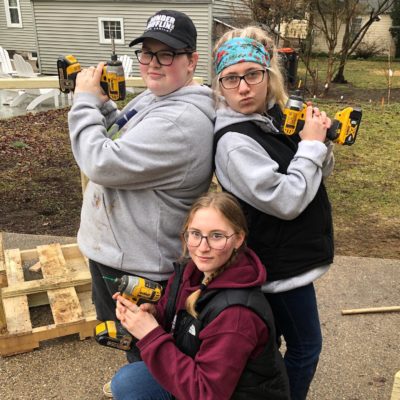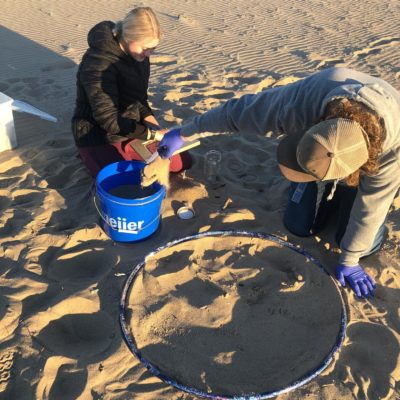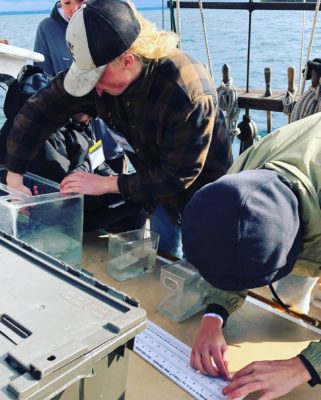From time to time, ISEA will share Great Lakes experiences from guest bloggers. In this blog, Great Lakes Watershed Field Course (GLWFC) participant Avril Wiers shares her experience and how she reinvigorated her classroom with watershed projects. Email marketing@schoolship.org if you would like to submit a Great Lakes experience to be featured.

Benefits of GLWFC
Coming out of the pandemic, I (like many other teachers) was burned out. After two years of visiting with guest speakers via Zoom and being confined to our school building, my curriculum was feeling old and uninspiring. One day, my curriculum director forwarded an email to me: “Four-Day Summer Teacher Professional Development in Northern Michigan.” On a whim, I applied. Months later, I was accepted to Inland Seas Education Association’s Great Lakes Watershed Field Course (GLWFC).
The GLWFC revitalized my teaching and reignited a passion for engaging students in project-based learning. Instead of force-feeding students curriculum, students are now asking questions, researching topics, and discovering the content on their own. By exploring topics that are locally relevant, students can connect to like-minded nonprofit and industry partners in our community, thereby building their employability skills. Through civic action projects, students feel empowered to take grassroots action on environmental stewardship. The GLWFC has brought back life to my classroom.
Student Takeaways

In our GLWFC project, students explored the issue of plastic pollution in the Great Lakes. After learning about the Great Pacific Garbage Patch, a 1.6 million square kilometer patch of pollution in the Pacific ocean (that’s twice the size of Texas, for those of us who don’t process in metric), students were eager to explore their part in the problem. We collected litter from six different public parks along the lakeshore, including sifting the sand for microplastics, particles of plastic that were smaller than 5mm in diameter. Students sorted and tallied the data and discovered that litter was a contributing factor–pieces of plastic left behind would become weathered and eventually became the microplastics that were ubiquitous on our beaches. Students connected with the Lakeshore Cleanup Coalition, a group of nonprofit organizations working on the beach litter issue. In partnership with these mentors, students designed, built, and installed DIY beach cleanup stations on four county beaches, hoping that the stations could educate the public about plastic and engage citizens in environmental stewardship.
“The plastic project was a very unique experience. It taught both hard skills (designing and building the stations) and soft skills (problem-solving and communication), which I think are important things to have as a well-rounded person,” reported Jalin Halcome, a senior at Zeeland East High School.

Thank you GLWFC
The GLWFC experience was so inspiring that I’ve made it a point to ensure that future students get the same connection to Inland Seas: This fall, I took 26 students on a Schoolship program. “The Inland Seas experience was amazing and really showed me how many amazing careers can come from understanding our own lakes,” said Alisa Kimber, a senior at Saugatuck High School.
I will be forever grateful to the GLWFC for connecting me with like-minded educators and inspiring me to think outside the box of traditional education. I look forward to continuing to engage and empower students through civic action projects. They’re as good for the students as they are for the planet!
.
.
Avril Wiers teaches Environmental Field Studies at a career and technical high school in Holland, MI. Her formative years were spent catching baby toads to put in her dollhouse, surfing the Great Lakes with her dad and brothers, and biking around Mackinac Island with her Girl Scout troop. Having earned her Bachelor’s degree at Hope College (spending two summers at the University of Michigan Biological Station), she left for the Last Frontier where she earned her Master of Science in Outdoor and Environmental Education from Alaska Pacific University. Her passion is empowering students to explore the natural world and to take action to protect it. You can learn more about her students’ microplastics research in this article.